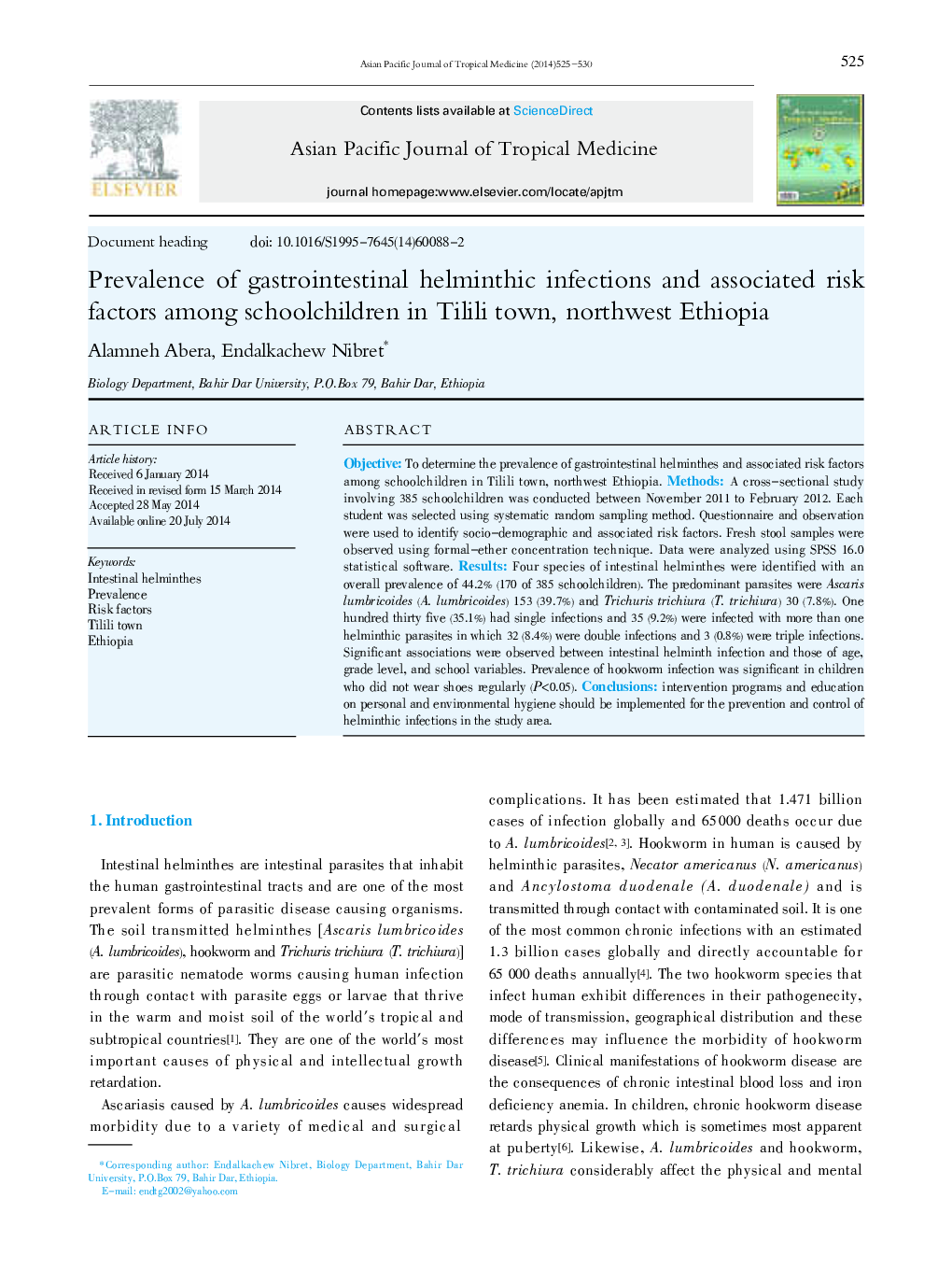| Article ID | Journal | Published Year | Pages | File Type |
|---|---|---|---|---|
| 3455308 | Asian Pacific Journal of Tropical Medicine | 2014 | 6 Pages |
ObjectiveTo determine the prevalence of gastrointestinal helminthes and associated risk factors among schoolchildren in Tilili town, northwest Ethiopia.MethodsA cross-sectional study involving 385 schoolchildren was conducted between November 2011 to February 2012. Each student was selected using systematic random sampling method. Questionnaire and observation were used to identify socio-demographic and associated risk factors. Fresh stool samples were observed using formal-ether concentration technique. Data were analyzed using SPSS 16.0 statistical software.ResultsFour species of intestinal helminthes were identified with an overall prevalence of 44.2% (170 of 385 schoolchildren). The predominant parasites were Ascaris lumbricoides (A. lumbricoides) 153 (39.7%) and Trichuris trichiura (T. trichiura) 30 (7.8%). One hundred thirty five (35.1%) had single infections and 35 (9.2%) were infected with more than one helminthic parasites in which 32 (8.4%) were double infections and 3 (0.8%) were triple infections. Significant associations were observed between intestinal helminth infection and those of age, grade level, and school variables. Prevalence of hookworm infection was significant in children who did not wear shoes regularly (P<0.05).ConclusionsIntervention programs and education on personal and environmental hygiene should be implemented for the prevention and control of helminthic infections in the study area.
